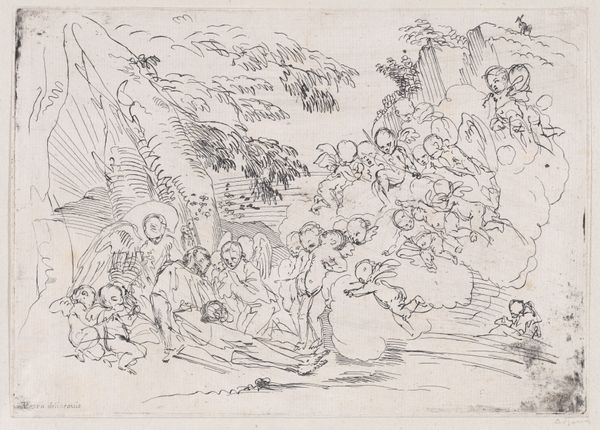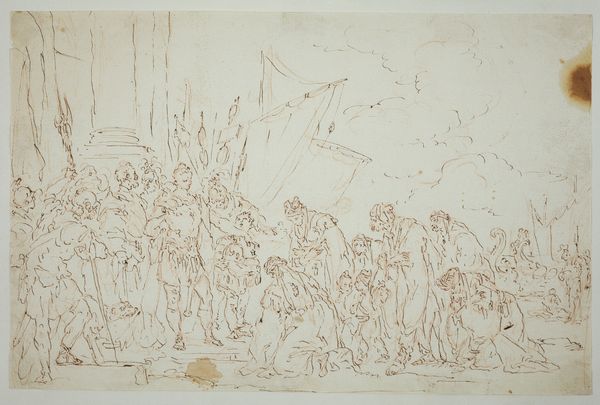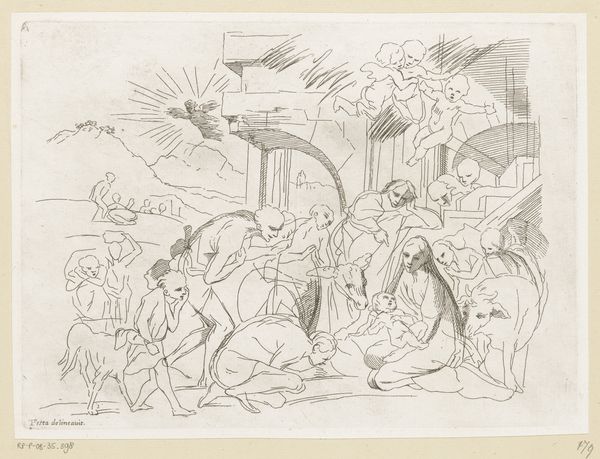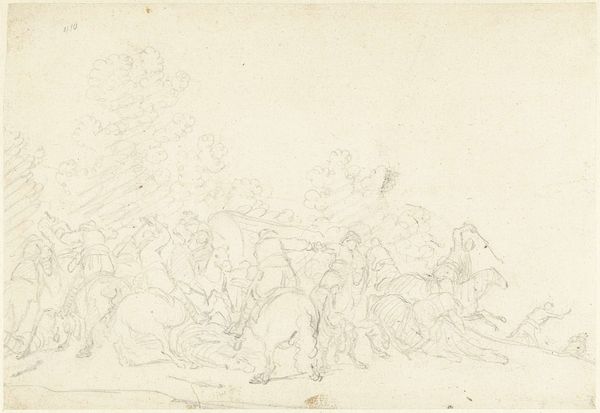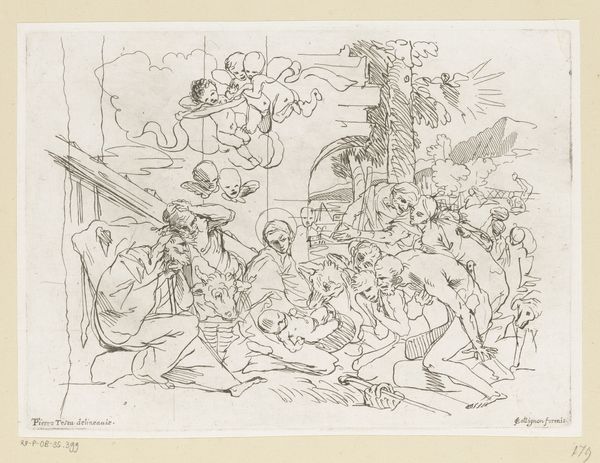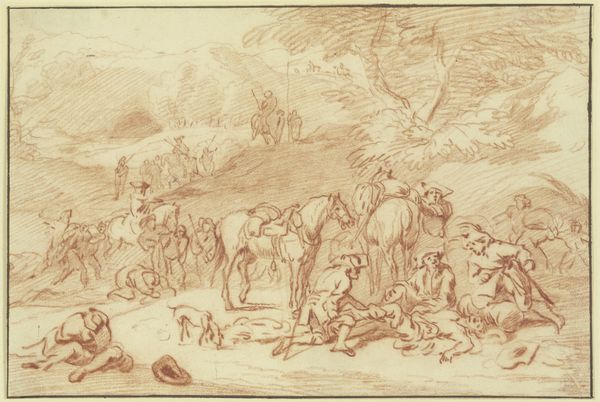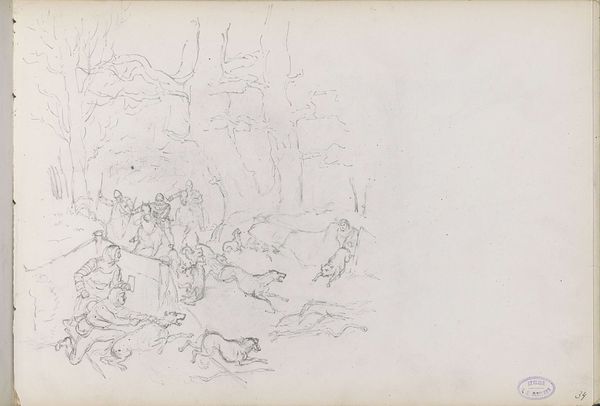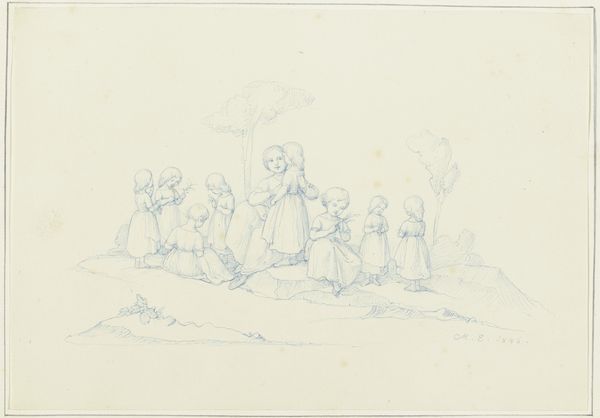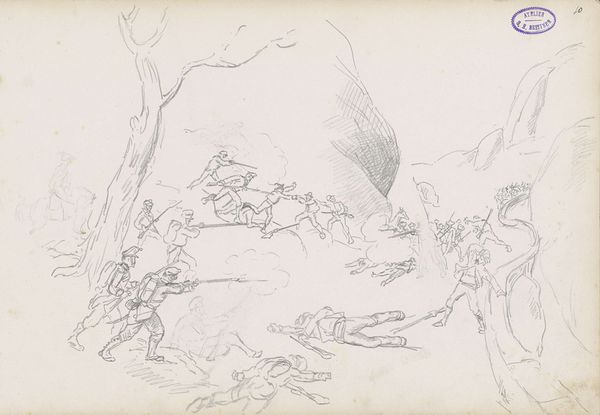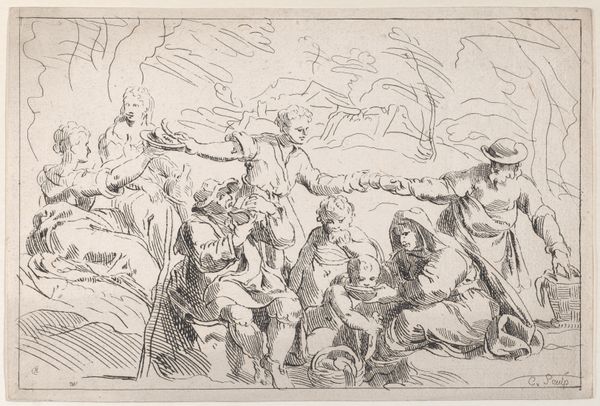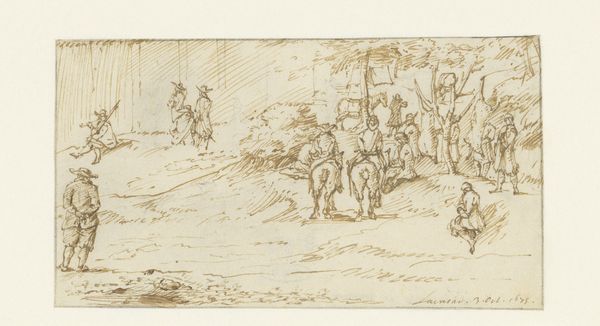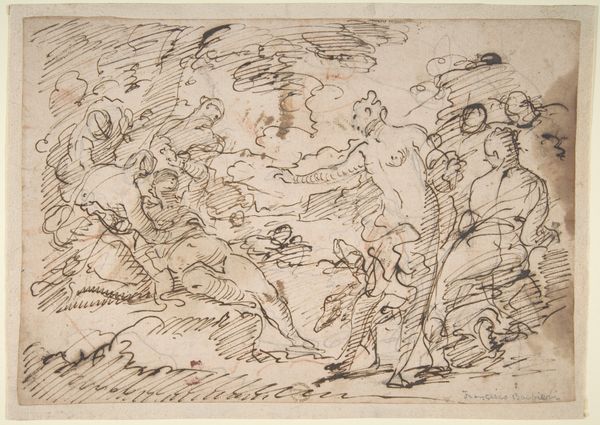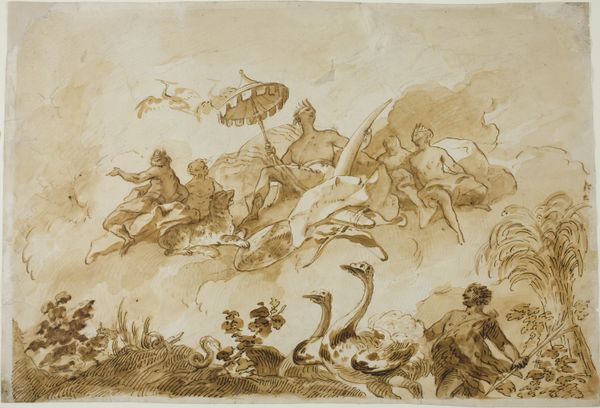
drawing, ink, pen
#
drawing
#
allegory
#
baroque
#
pen illustration
#
pen sketch
#
landscape
#
figuration
#
ink line art
#
ink
#
pen
#
history-painting
Dimensions: height 194 mm, width 275 mm
Copyright: Rijks Museum: Open Domain
Editor: Here we have a drawing, “Man met kruis liggend tegen rots, omringd door engelen,” or “Man with cross lying against rock, surrounded by angels,” made between 1650 and 1750 by an anonymous artist. It’s done with pen and ink. The scene feels…dreamlike, maybe? So much happening, almost chaotic with all the angels. What do you see in this piece? Curator: Well, situating this work in its probable timeframe, we see a continuation of Baroque sensibilities, particularly the dramatic and emotive religiosity that permeated artistic production. It prompts several questions: How does the portrayal of Christ's suffering here align with, or perhaps challenge, the doctrines circulating at the time? Was this intended for public display or private devotion? The sheer number of cherubic figures also says something about the prevailing artistic taste. Editor: Do you mean taste from an institutional perspective? Curator: Exactly! The Baroque period, fueled by Counter-Reformation ideals, witnessed a surge in religious imagery aimed at engaging the faithful, using spectacle and grandeur. A drawing like this might reflect those aesthetic and propagandistic goals even on a smaller, more intimate scale, compared to, say, large altarpieces. Are you picking up any sense of patronage from the work? Editor: It's interesting you bring that up. There's something almost sketch-like in its execution, which makes me wonder if it could've been a preliminary study for something bigger, maybe influencing the artistic style of a later history painting in the region. I'd have thought it a simple devotional piece at first glance. Curator: A really astute observation! And that touches upon the complex interaction between art, patronage, and the Church in those times, not just reflecting but also shaping beliefs through visual means. Food for thought. Editor: Definitely something to think about next time I visit this hall. Thanks for your insight.
Comments
No comments
Be the first to comment and join the conversation on the ultimate creative platform.
